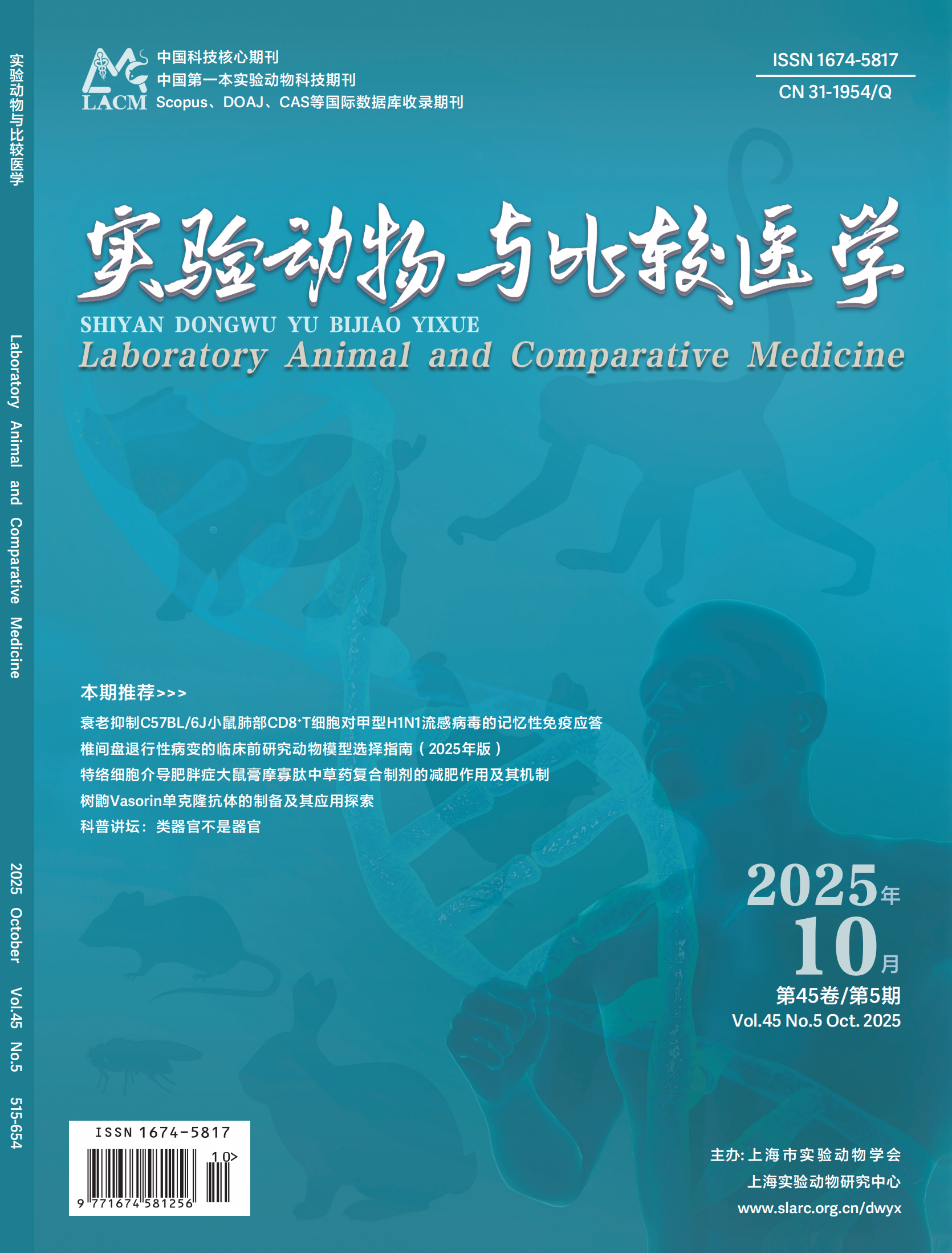-
Effects of Pharyngeal Refreshing Pills on Immune Cell Subsets and NF-κB Signaling Pathway in Chronic Pharyngitis
- TANG Yi, YU Guodong, HE Xingchen, WANG Jia, ZHANG Tian
-
2021, 41(5):
426-434.
DOI: 10.12300/j.issn.1674-5817.2021.006
-
 Asbtract
(
956 )
Asbtract
(
956 )
 HTML
(
23)
HTML
(
23)
 PDF (43931KB)
(
274
)
PDF (43931KB)
(
274
)
-
Figures and Tables |
References |
Related Articles |
Metrics
Objective To explore the effect and mechanism of pharyngeal refreshing pills on an animal model of chronic pharyngitis. Methods A total of 42 healthy New Zealand white rabbits were randomly divided into seven groups: control, model, manyanshuning granules (9 g/kg), pharyngeal refreshing pills at low- (0.025 g/kg), medium- (0.05 g/kg), high- (0.1 g/kg) doses, and atomization (0.025 g/kg) groups. Animal models of chronic pharyngitis were established by chemical stimulation in all rabbits except the control group. From the second day after successful modeling, the five treatment groups were administered with manyanshuning granules and different doses of pharyngeal refreshing pills every day, while the control and model groups were fed with white sugar (0.025 g/kg) for 7 days. From the third day after successful modeling, the local condition of the pharyngeal wall of each rabbit was observed every day. Blood samples were collected at the end of drug administration and examined. Histopathological changes in the pharyngeal wall mucosa were examined by hematoxylin-eosin staining, and the levels of CD3+, CD4+, and CD8+ were detected by flow cytometry. The levels of interleukin-6 (IL-6), IL-1, tumor necrosis factor-α (TNF-α), C-reactive protein (CRP), and total antioxidant capacity (T-AOC) in serum were detected by enzyme-linked immunosorbent assay (ELISA). Western blotting was used to detect the expression of IL-6, IL-1, TNF-α, nuclear factor-κappa B (NF-κB) p65 and NF-κB inhibitor (IκB-α) at the protein level in the pharyngeal wall mucosa. qRT-PCR was used to detect NF-κB p65 and IκB-α mRNA expression in the pharyngeal wall mucosa. Results Compared with the control group, the pathological tissues of the posterior pharyngeal mucosa of rabbits with chronic pharyngitis were significantly damaged; the levels of CD3+, CD4+, CD4+/CD8+, and T-AOC were significantly decreased, while the levels of CD8+, IL-6, IL-1, TNF-α, CRP, NF-κB p65, and IκB-α were significantly increased (all P < 0.01). Compared with the model group, the pathological injury of pharyngitis could be alleviated to different degrees in the treatment group; the levels of CD3+, CD4+, CD4+/CD8+, and T-AOC in the pharyngeal refreshing pills at high dose and atomization groups were significantly increased, while the levels of CD8+, IL-6, IL-1, TNF-α, CRP, NF-κB p65, and IκB-α were significantly decreased (all P < 0.05). The effect of high-dose pharyngeal refreshing pill administration was better than that of low-dose and middle-dose pharyngeal refreshing pills, and manyanshuning granules. Conclusion The pharyngeal refreshing pills can significantly improve the inflammatory index of chronic pharyngitis, reduce pathological injury, affect the expression of NF-κB signaling pathway-related factors, and the effect of atomization dose is more obvious.
-

